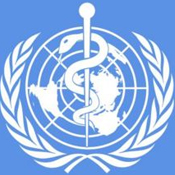Pandemic Declared by WHO
H1N1 is First Global Flu Crisis in 41 Years
Also called "swine flu," the influenza virus that killed 12 people in the US and has been reported in all 50 states also has infected nearly 30,000 people in 74 countries, says WHO Director-General Dr Margaret Chan. The last flu pandemic declared by WHO was in 1968.
She called upon governments to prepare for a long-term battle against the unstoppable flu virus. Countries from Australia to Chile and the United States have reported that the new virus is overtaking the seasonal flu and is becoming the predominant strain, Chan notes.
Presently the virus is pretty stable, yet Chan says it may still mutate into a deadlier form, and could take on the characteristics of the separate H5N1 bird flu virus still circulating in poultry populations.
Based on recommendations from flu experts, the WHO reiterated its advice to its 193 member countries not to close borders or impose travel restrictions to halt the movement of people, goods and services. Chan says further spread is "inevitable" and the 2009 influenza pandemic is still in its early stages. One positive to consider she says is that it is spreading under the close and careful watch of health officials around the globe. "No other pandemic to date has had this scrutiny. We will reap the benefits of the preparations of the last five years."
Chan warns that this early picture of the H1N1 can change very quickly. "It can change the rules, without rhyme or reason at any time."
Widespread transmission of the virus in Victoria, Australia, signaling that it is entrenched in another region besides North America, was one of the key triggers for moving to phase 6.
A unanimous experts' decision was based on an overall assessment in the eight most heavily hit countries including Australia, Britain, Canada, Chile, Japan, Mexico, Spain and the United States. The assessments showed the virus is spreading in a sustained way in communities, says Chan.






















